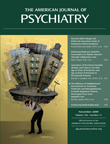Patient Tales is a thorough analysis of the uses of narrative in psychiatry, based on the historical documentation of single case reports from the earliest known medical records of British asylums to the clinical case conferences in the American Journal of Psychiatry. Dr. Berkenkotter is a professor in the Department of Writing Studies at the University of Minnesota and the author of articles on case histories in psychiatry. She collaborated with Doris Ravotas, a clinical psychologist, in Chapter 7, “Psychotherapist as Author: Case Reports, Classification, and Categorization.”
This book will appeal to literary critics and historians, as well as others interested in the history of psychiatry. Captivating renditions of late 18th- and early 19th-century case histories, which were documented in asylums in order to show accountability to auditors, allow the reader to watch the history of inpatient psychiatry unfold. Concurrent reports published in professional society journals served the purpose of communicating with peers and disseminating knowledge. John Haslam’s Illustration of Madness, published in 1810, allowed a direct view into one man’s delusional system, complete with direct quotes of the patient’s speech and his own illustrations. Through linguistic and semantic analysis of the patient’s thoughts, as depicted in this book, Dr. Berkenkotter identifies several markers of psychosis: derailment (loose associations), incoherence (word salad), clanging, neologisms, word approximations (paraphasias), and loss of goal (tangentiality). While case histories gained more solid outlines over time, mental health needs became more prominent in society’s conscience.
Sigmund Freud’s outpatient psychoanalysis heralded a new era in psychiatry. The author borrows a less flattering term from the historian Edward Shorter: “the psychoanalytic hiatus,” which refers to “the period in the 1950s and 1960s when Freudian, neo-Freudian, and psychodynamic theories became so profuse that psychiatry became a veritable Tower of Babel” (p. 12). Chapter 5, “The Freudian Hiatus,” is a critique of Freud’s
Fragment of an Analysis of a Case of Hysteria (1), specifically looking at use of direct patient quotes, as well as the degree of narrator’s interference (interpretation of the patient’s utterances). Dr. Berkenkotter demonstrates that Freud revolutionized this genre by utilizing great amounts of framed indirect quotes (i.e., “she declared that…”), framed direct quotes, and free direct speech (pp. 120–123). He also utilized a great deal of recontextualization, where previously uttered words or phrases were reused in different contexts. For those practicing psychodynamic psychotherapy, working with symbols, and attempting to trace reoccurring patterns, this is not a surprising finding, as dysfunctional object relation schemas get reenacted in different circumstances. Despite showing frequent usage of direct quotes, the author interprets this to mean that Freud “used his patients’ speech as scaffolding for his demonstrations of his psychoanalytic theory” (p. 126). Sadly lacking from this fastidious analysis of Freud’s language in his patient portrayals is the larger picture. As a result of encountering patients whose presentations did not fit medical understanding at the time, Freud developed a novel theory and therapeutic technique addressing these symptom constellations and had to communicate his observations in a manner acceptable to a Victorian audience. Another limitation of Dr. Berkenkotter’s linguistic inquiry into Freudian discourse is that despite high-fidelity translations, studying translated works is different from poring over the same writings in their original language, possibly allowing for another degree of interference.
The second part of the book, titled “The Era of Biomedicine,” reflects the well-publicized dilemma that psychiatry as a medical field had to negotiate. Previously dynamically grounded diagnostic criteria gave way to the epidemiologically founded approach of DSM-III. Individual case histories became less desirable to major specialty journals, including the Journal, which started placing emphasis on larger case series, as well as randomized controlled studies. This movement reflected the general direction of the field, fatigued with criticism of having given too much credit to inexorable Freudian principles and looking for a true place in the world of scientific empirical inquiry. Dr. Nancy Andreasen, former Journal editor-in-chief, is credited with reinstating case histories as clinical case conferences (p. 130).
In summary, this is a historical excursion into the genre of psychiatric case histories, paralleling the growth of our field, from being confined to insane asylums with no coherent communication modality reflecting patients’ states to the highly formatted templates that all mental health care practitioners use nowadays and the systematic diagnostic approach transcending professional boundaries. It’s my idiosyncratic opinion that instead of reviewing this book, I would have learned more by reading the latest clinical case conference.

